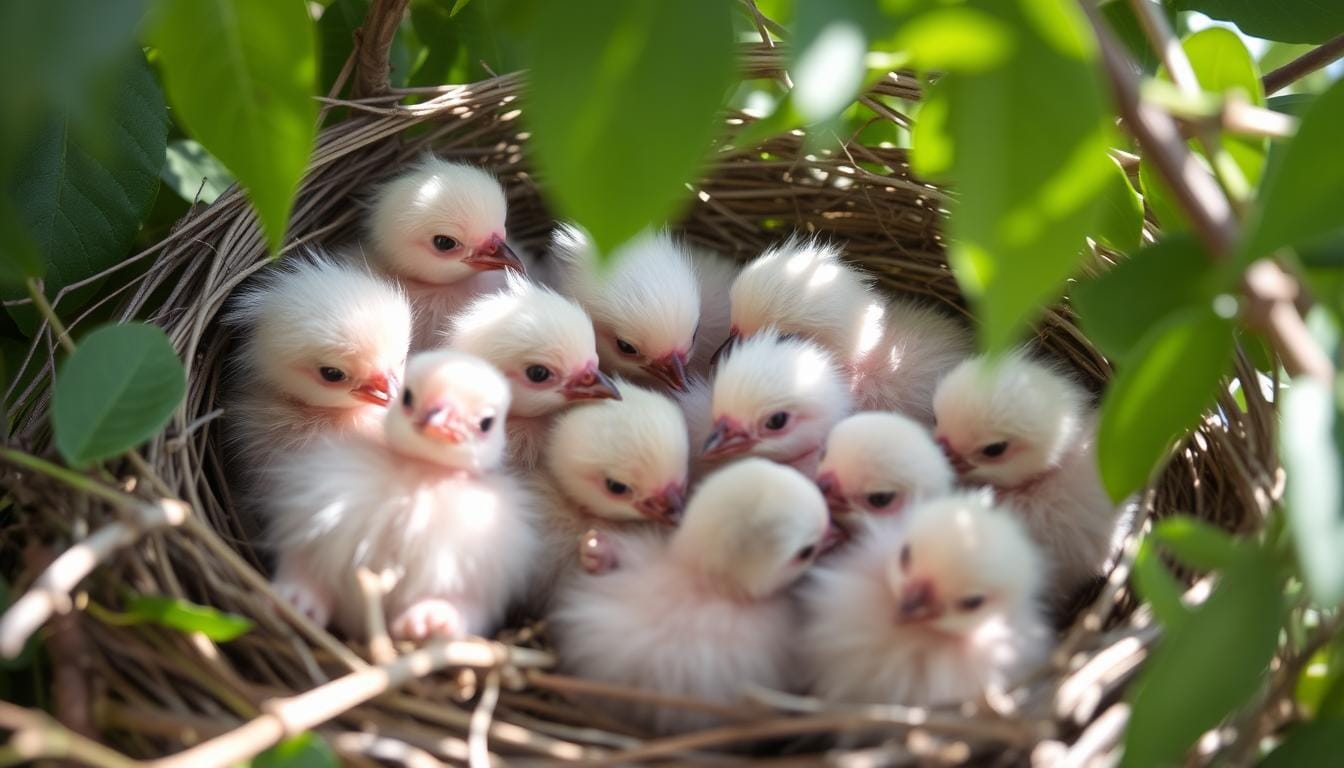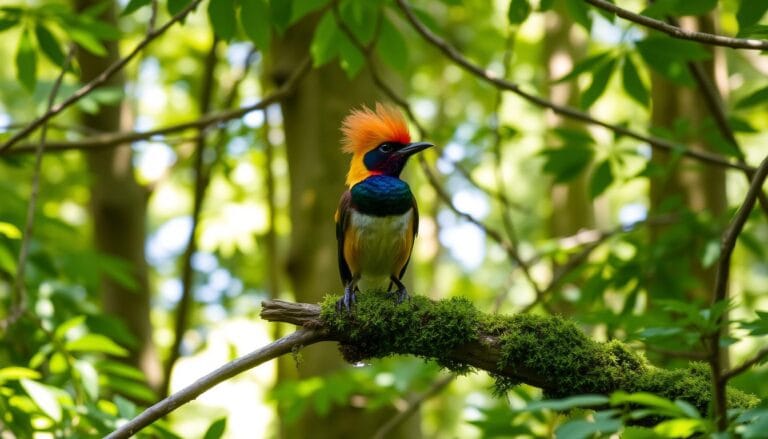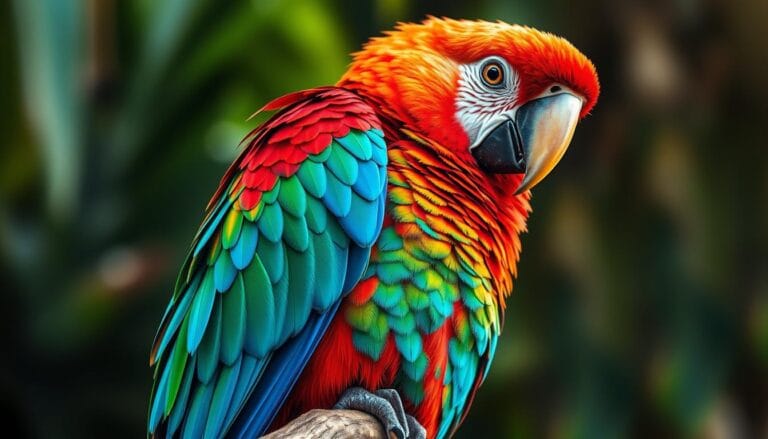Baby Bird: Your Complete Care Guide
Welcoming a baby bird into your life is exciting but comes with big responsibilities. You might wonder what to feed a baby bird and how to keep it safe. Caring for baby birds needs careful attention, patience, and a desire to learn about their needs.
Table of Contents
As you start caring for your baby bird, you’ll learn about its unique needs. For example, altricial baby birds need to eat every half-hour, which is 48 times a day early on. Knowing these needs is key to giving your baby bird the best care.
Key Takeaways
- Understanding the different types of baby birds and their specific needs is essential for providing proper care.
- Creating a safe and warm environment is crucial for baby birds to prevent hypothermia and stress.
- Feeding baby birds requires attention to detail, including what to feed a baby bird and how often to feed them.
- Temperature control is vital, with heating elements needing to be placed at a safe distance to avoid overheating.
- Species-specific care is crucial, as incorrect care can lead to behavior defects, growth abnormalities, or even death.
- Knowing what do baby birds eat and how to provide the right nutrition is essential for their growth and development.
- Seeking expert guidance is recommended, especially when it comes to feeding baby birds, to ensure the best possible care.
What to Do When You Find a Baby-Bird
When you see a baby-bird on the ground, you might want to pick it up. But, it’s not always the right thing to do. You need to check if the bird really needs help and know what to do next.
It’s important to see if the bird is really in trouble. The U.S. Fish and Wildlife Service says most baby-birds are okay unless they’re really young or can’t see. If you find a baby-bird, here’s what you can do:
- Check if the bird is a nestling (without feathers) or a fledgling (with feathers) to determine the best course of action.
- Look for signs of injury or illness, such as dirty or matted feathers, fluffed feathers, or visible injuries.
- Consider contacting a wildlife rehabilitator if the bird is injured, orphaned, or you are unsure of what to do.
If you’re not sure what to do, it’s safer to ask for help. Look up wildlife rehabilitators in your state or search online for “wildlife rehabilitator near me.” Always handle the bird gently and keep it warm until you can get it to a professional.
Understanding Different Types of BabyBirds
When caring for baby birds, knowing the different species is key. About 50% of young songbirds, like finches and chickadees, are altricial. This means they rely fully on their parents for food and safety early on. In contrast, precocial birds, such as ducks, can move and find food soon after hatching.
Each baby bird has its own special beak shape and size. For instance, young robins start without their adult red breast. Young mistle thrushes look different from adults, with a scaly look. Here’s a quick look at the main differences between altricial and precocial birds:
- Altricial birds are not feathered at birth and grow feathers in 2 to 3 weeks.
- Precocial birds can walk and find food soon after hatching.
- Fledglings, older than nestlings, may need up to 5 days to fly well.
Knowing the type of baby bird you’re caring for is vital. By understanding their unique traits, you can give them the best care. This way, they have a good chance of surviving.
Creating a Safe Temporary Home
When a baby bird falls from its nest, it needs a safe place to stay. You can use a small cardboard box or a plastic container with airholes. Line it with a soft cloth or paper towels for comfort.
Keeping the bird warm is key since they can’t control their body temperature. A low heating pad or a hot water bottle wrapped in cloth works well. Make sure the bird has food and water too. If you’re not sure what to feed it, ask a wildlife expert or vet.
Choosing the right bedding is important for a baby bird’s temporary home. Use soft materials like cloth or paper towels. Add dry grass or leaves for a natural feel. Stay away from harmful items like cotton balls or small toys. A safe, cozy home can help a fallen baby bird survive.
Proper Container Setup
- Use a small cardboard box or a plastic container with airholes
- Line the box with a soft cloth or paper towels
- Add some dry grass or leaves to create a natural environment
Temperature Control
Baby birds need warmth, especially after falling from their nest. A low heating pad or a hot water bottle wrapped in cloth can help.
Bedding Requirements
Choose safe bedding for the bird. Use soft materials like cloth or paper towels. Add dry grass or leaves for a natural touch. Avoid harmful items like cotton balls or small toys.
What Do Baby Birds Eat: A Complete Feeding Guide
Feeding a baby bird right is key. Their needs change with age and species. They eat often, about 12 to 14 hours a day. Their diet is rich in protein, like insects, seeds, and worms.
Insects are vital for baby birds. They get protein from worms, grasshoppers, and mosquito larvae. This meets their high-protein needs.
Knowing what to feed a baby bird depends on its type and age. Soft fruits like blueberries and strawberries are good for some birds. But, avoid harmful foods like honey and dairy. You can find special baby bird feeds in pet stores.
- Avoid feeding baby birds cow’s milk, as it is known to upset their stomachs.
- Do not feed baby birds human foods, as over 90% of them do not meet the nutritional requirements of baby birds.
- Provide a diet rich in insects, such as worms and grasshoppers, to fulfill their high-protein diet needs.
Knowing what to feed a baby bird is crucial for their health. Always check with a local wildlife centre for advice. This ensures the bird grows well.
Common Health Issues in Baby Birds
When you find a baby bird, knowing about common health issues is key. Baby birds often face problems like respiratory infections and dehydration. Research shows that less than 33% of baby wild birds make it past their first year. This highlights the importance of proper care and attention.
Some major health issues in baby birds include respiratory infections caused by bacteria, viruses, or fungi. Dehydration is also a big worry, especially for young birds still learning to eat and drink. Other issues include Salmonella, Avian Conjunctivitis, and feather mites.
To spot illness in baby birds, watch for signs like labored breathing, lethargy, and loss of appetite. If you see these signs, get veterinary care right away. Meanwhile, you can offer basic first aid like keeping the bird warm and hydrated. But remember, baby birds have special dietary needs, and wrong food can harm them.
Important things to remember when caring for baby birds include:
- Providing a clean and safe environment
- Offering a nutritious diet that meets their specific needs
- Avoiding handling the bird too much, as it can stress them and cause health problems
By knowing about common health issues and providing proper care, you can help baby birds survive and thrive. If you find a baby bird, knowing how to care for it is crucial for its health and well-being.
Understanding Baby Bird Development Stages
When a baby robin fell out of nest, knowing the different stages of baby birds is key. Each stage, from hatchling to fledgling, has its own needs. This knowledge helps in giving the best care.
The growth of baby birds can be broken down into three main stages: hatchling, nestling, and fledgling. Here’s what you need to know about each stage:
- Hatchlings (0-3 days old) have not yet opened their eyes and may have wisps of down.
- Nestlings (3-13 days old) have open eyes, with wing feathers resembling tubes.
- Fledglings (13-14 days old or older) are fully feathered, capable of walking, hopping, or fluttering.
As baby birds grow, their care needs change. Knowing these stages is crucial for their well-being. Whether it’s a baby robin fell out of nest or another species, understanding their stage is vital.
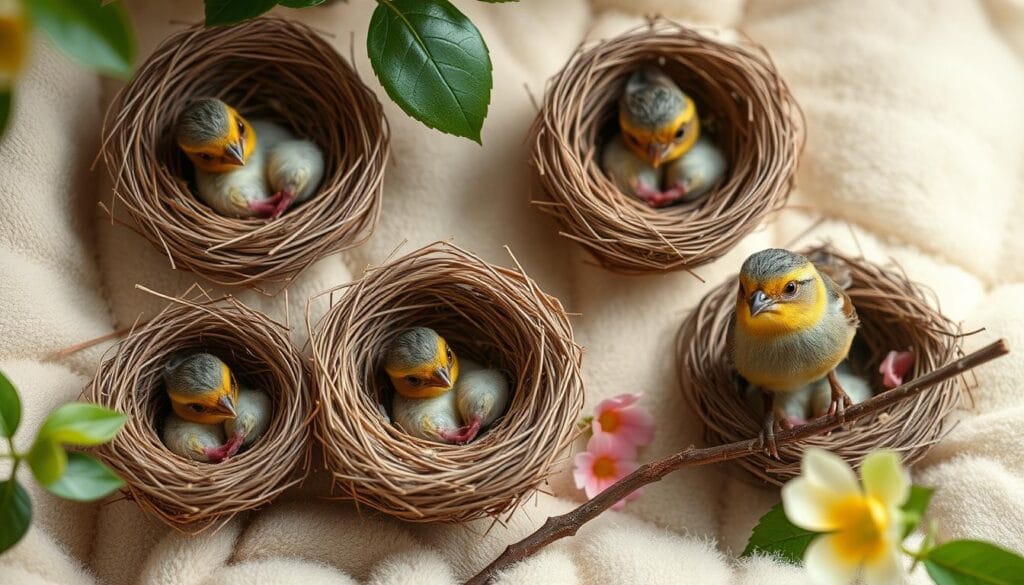
By knowing the different stages of baby birds, you can give them the right care. Always handle them gently and with care. If unsure, it’s best to seek professional help.
Unique Features of Baby Bird Anatomy
When you find a newborn bird, it’s key to know its special features for the best care. Baby birds have unique traits that differ from adult birds. One key feature is their gaping behavior, where they open their beaks wide to get food from their parents.
As you care for baby birds, you’ll see their wing and feather growth. These are vital for their survival and flying ability. Altricial birds, like robins and owls, are born needing parental care. Precocial birds, like ducks and chickens, can feed themselves soon after hatching.
Understanding Gaping Behavior
Gaping behavior is crucial for baby bird growth, letting them get food from their parents. This action is often paired with chirping and wing flapping. These signs tell parents that the baby bird is hungry.
Wing Development
Wing growth in baby birds happens slowly, with some species taking longer than others. For example, great frigatebird chicks need about 6 months to fly. They also get fed by their parents for another 14 months.
Feather Growth Patterns
Feather growth in baby birds changes with each species. Some, like house sparrows, grow feathers fast. Larger birds, like golden eagles, may take 4 to 5 years to get full feathers. Knowing these patterns is important when caring for baby birds, especially if you find a newborn.
By knowing these special features of baby bird anatomy, you can better care for them. Whether it’s altricial or precocial birds, understanding their needs is key for their growth and survival.
Reuniting Baby Birds with Their Parents
When you find a baby bird, knowing what to do is key. If a baby bird is falling from its nest, act fast and carefully. Wildlife experts say reuniting a baby bird with its parents is the best outcome.
To help, create a safe space and encourage the parents to come back. This can increase the chances of a successful reunion.
Monitoring the nest is crucial to see if parents return. Watch the nest from afar for at least an hour. This ensures the parents are feeding and caring for their young.
If parents don’t return in two hours, or if the baby’s condition gets worse, seek help. Bring them to a wildlife rehabilitation center, like Project Wildlife.
Here are some key points to consider when reuniting a baby-bird with its parents:
- Monitor the nest for at least one hour to confirm parental return.
- Keep the baby-bird in a safe and warm environment, away from predators.
- Avoid handling the baby-bird excessively, as this can cause stress and reduce the chances of reunion.
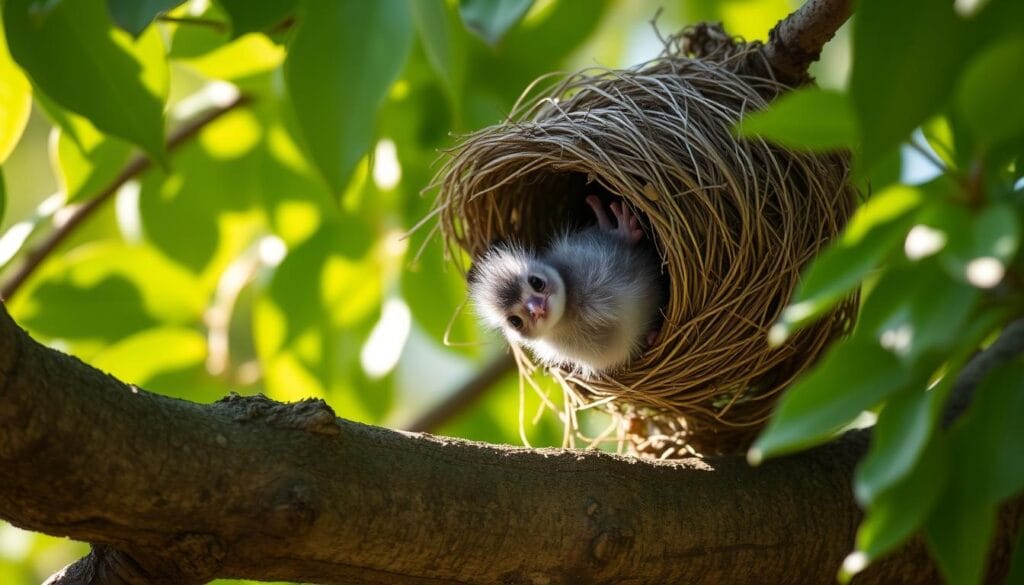
Reuniting a baby-bird with its parents needs patience, care, and attention to detail. By following these steps and getting professional help when needed, you can help the baby-bird start life well. If you’re unsure about what to do if you find a baby bird, always ask a local wildlife expert or rehabilitation center for advice.
Legal Considerations of Baby-Bird Care
When you find a baby-bird, there are important legal things to know. In the United States, caring for wild birds without a license is illegal. This can lead to fines or legal trouble, as laws vary by state.
The Federal Migratory Bird Treaty Act and state laws say it’s illegal to harm or keep an indigenous bird. So, if you find a baby-bird, don’t try to care for it yourself. Instead, call a licensed wildlife rehabilitator. They have the right skills and tools to help the bird.
- Check with your state’s wildlife agency to find out the laws about baby-bird care in your area.
- Never try to care for a baby-bird yourself. It can actually hurt the bird more.
- If you find a baby-bird that looks orphaned or hurt, call a licensed wildlife rehabilitator.
Knowing the legal side of baby-bird care helps these amazing creatures get the best care. If you find a baby-bird, handle it carefully. Then, get advice from a licensed wildlife rehabilitator as soon as you can.
Common Mistakes to Avoid in Baby-Bird Care
When caring for baby-birds, it’s key to know common mistakes that can harm them. One big thing is knowing what to feed a baby bird. Wrong food can cause malnutrition, slow growth, and even death. It’s vital to find out what food the bird needs and give them a balanced diet.
Some common mistakes to avoid when caring for baby-birds include:
- Overfeeding or underfeeding, which can lead to weight fluctuations and health problems
- Failing to provide a safe and clean environment, which can increase the risk of infection and disease
- Not monitoring the bird’s temperature, which can lead to hypothermia or heat stress
It’s also important to know the risks of caring for baby-birds. By learning about their needs, you can give them the best care. Always put their health first and seek help if you’re unsure.
By avoiding common mistakes and giving proper care, you can help baby-birds grow strong. Always research what to feed a baby bird and create a nurturing environment for them.
Conclusion: Ensuring Successful Baby-Bird Care
Caring for baby-birds is a delicate and rewarding task. It needs patience, dedication, and a deep understanding of their needs. By following the comprehensive guidance in this article, you can ensure the successful care of baby-birds.
Knowing what to do if you find a baby bird is key. Providing the right shelter, temperature, and nutrition is crucial for their survival. With careful monitoring and support, you can help these fragile creatures thrive and eventually return to their parents or live in the wild.
Successful baby-bird care is a team effort, often needing local wildlife experts. By working together and following best practices, we can make a brighter future for these remarkable birds. Let’s ensure every baby-bird has a healthy, happy life.
FAQ
What should I do if I find a baby-bird on the ground?
If you find a baby-bird on the ground, stay calm. Check if the bird really needs help. If it looks injured or upset, call a wildlife rehabber for help.
How can I tell different types of baby birds apart?
Baby birds are divided into nestlings and fledglings. Knowing their differences helps you care for them better. This ensures the best outcome for your bird.
What should I use to create a safe temporary home for a baby-bird?
To make a safe home for a baby-bird, use the right container and control the temperature. A small washcloth helps pick up the bird. A nest in a box keeps it comfortable.
What should I feed a baby bird?
Feeding a baby bird needs care. Knowing what to feed is key. From mynah bird pellets to dry dog food, the right food is crucial.
How can I identify if a baby bird is sick or injured?
Knowing when a baby-bird is sick is important. This section talks about common health problems. It also guides on first aid and when to see a vet.
How can I help reunite a baby-bird with its parents?
Reuniting a baby-bird with its parents is the goal. This section explains how to make a safe space. It helps the parents come back, which is best for the bird.
What legal considerations do I need to keep in mind when caring for a baby-bird?
Knowing the law is key when caring for a baby-bird. This section covers state laws and protected species. It helps you care for the bird legally.
What are the common mistakes to avoid when caring for a babybird?
Avoiding mistakes is crucial for the bird’s health. This section talks about common errors. It offers tips to avoid them.
There are no reviews yet. Be the first one to write one.

